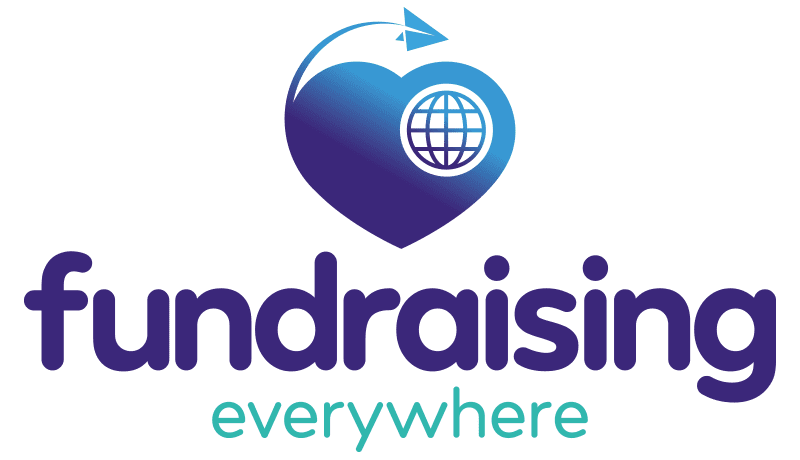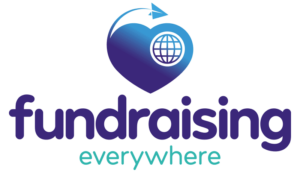
Guest blog post by Rachel Erskine, Fundraising and Communications Consultant working primarily for Nairobi-based public health NGO Amref Health Africa.
In season two of Only Murders in the Building, Selena Gomez’s character, Mabel, says:
I don't want my life to be all about the worst parts of it. I have more to offer than that.
She has discovered that Alice, the woman she’s been dating, has used Mabel’s life as inspiration for a piece of art. Seeing her painful personal history played out by actors, Mabel feels like she’s been catapulted back in time. In reality, she’s moved on – but the artwork has frozen her in the past. Stripped of its context, filtered through Alice’s own experience, the story paints a portrait of Mabel that she doesn’t recognise.
Being trapped in time
When charities share the stories of those they support, this is sometimes what we do, too. Through words, film or pictures, we capture people in a particular set of circumstances: circumstances that, given the nature of our work, we hope will quickly change for the better. We reduce them to the challenge they are facing. We trap them in time.
As a sector, I think we are starting to acknowledge the damage we do when we treat people’s stories as our property. In recent years, there’s been a real shift in the way charities are approaching fundraising storytelling, particularly when it comes to the way we represent the people we serve. Organisations working internationally – the sub-sector I’m most familiar with – are coming to terms with the harm they’ve caused through decades of reductive storytelling that centres the charity rather than the contributor.
How do we change course?
There is broad consensus as to the direction we all need to move in: one that puts people – their rights, preferences, agency, and wellbeing – first. But from what I’ve seen, there’s less certainty when it comes to how to change course. So how do we begin to shift the balance? Here are some ideas.
- It sounds trite – but as an individual, all you can do is start where you are. Think about the decision-making processes you are part of or have access to. Is there anyone in your orbit you can influence, whether upwards, downwards, or horizontally?
- Examine your content production processes through the lens of power. Who has a say – and when? How can editorial control be shared so that the people telling their stories feel a sense of control over both process and product?
- Review your approach to consent. When people are giving you permission to share their stories, are they giving it freely and fully? Is that consent informed, and does it have an end-point? Do people know how to get in touch with you if they change their minds?
- When it comes to building consensus within your organisation, you might find it helpful to start with something concrete, like auditing your image library or reviewing your language guidance. A tangible task can serve as a springboard for broader conversations and more fundamental change.
- Alternatively, you might prefer to begin at a more abstract level. Why not start a book club, or organise a screening of a film that deals with some of the themes you’re thinking about?
- Rethink risk: As a sector, we can be very risk-averse. And yes, we must be conscious of financial and reputational risk in everything we do – but ultimately, the biggest risk we run is damaging our relationships with the people we support. Once lost, that trust is hard to get back.
- Set aside the assumption that stories told ethically won’t be as compelling. When we let contributors control the way they’re depicted, we can discover new creative possibilities: stories, and ways of telling them, that would never have occurred to us.
- Get people on board by framing storytelling as an extension of service-delivery: ideally, the way we talk about our work should be consistent with the way we approach that work. The two should be governed by the same values, and our beneficiaries should be able to hold us to account when we get things wrong.
- Start small. A/B test new messaging, maybe just on one channel. Measure the results, scale up what works – and share your findings.
- Ask! See this as an opportunity for engagement. Seek feedback on your storytelling from contributors, as well as from your supporters: they, too, are ready for change.
Final thoughts
There’s a strong argument to be made that to be truly meaningful – and sustainable – changes to our storytelling need to happen in parallel to, and as part of, broader and more fundamental shifts in the role charities occupy. I think that’s true. But I am also convinced that, when it comes to moving away from deeply embedded, decades-old ways of doing things, even small changes are worth pursuing – and we all have a part to play.
Rachel Erskine is a fundraising and communications consultant working primarily for Nairobi-based public health NGO Amref Health Africa. You can find her at @erskinerachel.
This blog was first shared in #FundraisingEveryWeek, our weekly email newsletter which provides fundraising tips, support, info and feel-good vibes.
If you’d like to get more content like this straight to your inbox, you can subscribe to email below:

Photo by Melanie Deziel on Unsplash
Guest blog post by Jasmin Hedger, creator of Happenin Studio.
Are you looking for top tips on creating a charity paid ad that generates a great return on revenue?
Look no further! In this blog post, we’ll go over 7 of the best ways to create a charity paid social media ad that gets results. Whether you’re just starting or an experienced marketer, these tips will help you create an effective, successful paid ad for your charity. So let’s get started!
1) Keep your audience in mind.
When creating a paid ad for a charity or non-profit organisation, your target audience should be at the forefront of your mind. Think about your target audience and how you can best reach them. What kind of language will resonate with them? What types of visuals will grab their attention? What type of content do they find most engaging? Once you better understand your target audience, you can tailor your ad to fit their needs and interests. This will help you create an ad that stands out and resonates with your audience.
2) Use high-quality images and video.
You only have a few seconds to grab the viewers’ attention with your creative, so make it impactful with bold colours, simple text, and emotive images. Choose visuals to grab the viewer’s attention and make them feel something. Whether you choose a powerful image or an inspiring video, your goal should be to create an ad that will engage the viewer and drive them to take action.
Quality images and video can be the difference between an ad that works and one that doesn’t.
When selecting images or videos for your ad, choose visuals with a clear focus, good composition, and engaging content. Professional photography or video can help elevate your message and show viewers you care about delivering quality content.
If you can’t access professional photos or videos, look for stock libraries or image banks with great visuals.
Remember your audience when selecting an image or video for your charity ad. Think about what visuals will draw them in and help convey your message. If you are working with an image bank or stock library, consider looking for the visual that illustrates your desired narrative before writing the copy. This can help ensure you create an ad that resonates with your target audience and effectively communicates your message.
This is one of the best performers made whilst working with Friends of the Earth. Watch with the sound on.
3) Use persuasive copy.
Using persuasive copy can make or break a paid ad. When writing copy for your paid ad, it’s important to keep it clear, simple, and to the point. Avoid jargon and technical terms that could confuse your audience. Instead, focus on making an emotional connection with your audience by being specific about the results they can achieve if they act on your call to action.
Tell stories, use facts and figures, and provide information about their action’s impact. Focus on what the user will gain from action and highlight the benefits of donating to your charity.
Show that you understand their needs and why they should care about your cause.
Additionally, you want to ensure your ad resonates with the target audience. Consider your tone of voice and other current affairs, such as the cost of living crisis, as the ad might reach people who cannot donate and create a negative impact if the message is too forceful.
Include a strong call to action at the end of your ad to encourage people to act. You want to create urgency in your message and tell people why they should act now instead of later. Use language that grabs attention, such as Donate Now or Take Action Today.
4) Use a strong call-to-action.
When creating a paid ad for your charity non-profit, it’s important to ensure that the ad has a clear and concise call to action. Your CTA should be short, easy to understand, and clearly state what the user needs to do next. It should also be strategically placed in an area of the ad where users are more likely to take action.
You can use language like Donate now or Help us help those in need to encourage people to act.
Alternatively, you could direct them to a specific webpage or link where they can find out more information. Consider adding urgency to your CTA using phrases like Act now! or Time is running out!”
Your CTA should evoke a sense of empathy and remind people why they should be supporting your charity.
Remember that your ad should create a connection between the audience and your cause, which will drive them to take action.
5) Set a clear budget.
When setting a budget for a paid media ad, it’s important to be mindful of how much you want to spend. It’s important to be realistic with your budget and ensure that the amount you set is one that you can follow through with.
A good starting point is to allocate an initial budget for a few days or weeks of testing, then scale up if you see success.
Additionally, it’s important to consider other factors, such as the duration and placement of the ads.
It’s also essential to determine your campaign’s cost-per-click (CPC) and cost-per-impression (CPM). Once these are calculated, you can use them to predict the potential success of the ad and decide whether or not it’s worth investing in.
In addition, try to track ROI from the start. This will help you determine whether or not you’re getting a return on investment. A good practice is to evaluate your campaigns every month and make changes as needed.
Finally, it’s important to stay organised and create systems that allow you to track progress, adjust your budgets as needed, and make the most out of your ad campaigns. When done right, a well-planned budget can lead to an effective and successful charity paid media campaign.
6) Test, test, test!
Testing different variants of your ad are the key to finding what works best. Experiment with different combinations of visuals, copy and placements to see what resonates most with your audience.
You may find that using video instead of stills or adding a new opening line to your ad helps to draw more attention and get better results.
Don’t be afraid to try something new and see how it works – after all, that’s why you’re testing!
You should also experiment with different placements for your ads, such as running them on the feed and in stories, as well as different running time lengths.
By testing these variables, you’ll be able to determine which ones work best for your target audience and generate the best return on investment for your non-profit.
7) Keep it simple.
When creating a charity paid social media ad, it’s important to keep it simple. If the message is too complicated or convoluted, viewers won’t take the time to understand it.
Focus on a single message and ensure that it is clear and concise. Your copy should be direct and unambiguous, using language that is easy for your target audience to comprehend.
Keep your visuals consistent; avoid using too many elements that could confuse viewers. Stick to one main concept per ad and use simple, recognisable images and text.
Avoid the common pitfalls of over-complicating the message with too many details or including irrelevant information.
A straightforward approach is the best way to grab viewers’ attention and interest them in learning more about your cause.
When in doubt, keep it simple. Think of the main message you want to get across and focus on conveying that in the most straightforward way possible. Doing so will help ensure that your ad is effective and successful.
The fab Jasmin Hedger, creator of Happenin Studio, is a designer, award-winning video editor, animator, and photographer with a specialty in creating content for social media, websites, and marketing. Want more content like this? Check out more from the Happenin Studio
We’ll be talking about paid social, digital fundraising and more in October’s Individual Giving Conference. Learn more.

The deadline for this role has passed and we are no longer accepting applications.
Role: Growth Marketing Exec (Fundraising Everywhere)
Salary: €30,000 / £26,500
Hours: 30 per week, worked at any time through the week between 7am – 7pm UK/Ireland time
Direct reports: None
Working alongside: Head of Growth Marketing, Community Manager
Reporting to: Head of Growth Marketing
Location: Remote – Must live in UK/Ireland
About the role
This person will support the marketing of Fundraising Everywhere (FE) including social media (paid and organic), email (emails and journey), content creation, reporting and PR support.
The purpose of the role is to support the existing marketing function to increase brand awareness and participation numbers to Fundraising Everywhere events/Membership, and supporting Fundraising Everywhere’s mission to create a better sector for fundraisers.
Our long-term goal is to grow the marketing team and dedicate a team of people to Fundraising Everywhere. The Growth Marketing Exec is the start of this growth and the start of an exciting new chapter for the organisation.
Below you’ll find a list of responsibilities for the role. We understand that you might not have experience in every detail, so if this is you and you think this role is right for you, please still get in touch.
Organic & paid social:
-
- Copywriting & graphic creation
-
- Social media content generation and scheduling
-
- Will work across platforms including Twitter, Linkedin, YouTube, Facebook, Instagram
-
- Community management
-
- Reporting & analysis, insight
-
- Copywriting & graphic creation
-
- Email; promo & retention, journeys (welcome, conversion & reactivation)
-
- Mailing list management
-
- Reporting & analysis, insight
Website
-
- Blog development (including guest blogs)
-
- SEO
-
- CMS
-
- Conversion flow optimisation
-
- Reporting & analysis, insight
Podcast
-
- Project management
-
- Asset creation
-
- Marketing
Affiliates, sponsors and marketing partners
-
- Content generation including generation of promo packs
-
- Support affiliates with event content, collateral and communications
Creative development
-
- Canva
-
- Working closely with video editors
General
-
- Identify leads and opportunities for Community Manager
-
- Contributes to team meetings
-
- Contributes to marketing planning
-
- Contributes to event curation
Key relationships
-
- Head of Growth Marketing
-
- Community Manager
-
- Everywhere+ Senior Account Manager
-
- Everywhere+ team
-
- Third-party agencies/freelancers
-
- Online community via mailing list and social media
-
- Co-Founders
-
- External suppliers or freelancers for graphic design, editing etc.
-
- Affiliates
What we offer
-
- Flexible and remote working
-
- Christmas close down
-
- 28 days holiday plus UK Bank Holidays (includes Christmas close down)
-
- Training budget (after six months successful probationary period)
-
- One day a month offline for reflective development (after six months successful probationary period)
What we’re looking for
Someone who
-
- Has experience with content, email, paid and organic social marketing
-
- Is a great written communicator
-
- Has experience with cultivating leads from digital marketing activity
-
- Can regularly analyse activity and develop plans for continuous improvement
-
- Can make graphics (Canva is fine) for online use
-
- Has experience with WordPress/Elementor
-
- Has great relationship-building skills
-
- Is a team player and can work alongside others on shared goals
-
- Has great attention to detail and can spot opportunities from leads and social listening
-
- Is (very) organised and proactive in spotting opportunities and working towards them
-
- Can keep Head of Growth Marketing up to date with what’s happening and what you require to make your job easier and more effective
Don’t worry if you haven’t worked with virtual events before, we will provide full training.
About us
Fundraising Everywhere was created out of a need for inclusive events in the charity sector and is a tech for good start-up working within the third sector.
Fundraising Everywhere: We care a lot about making professional and personal development accessible and affordable so all fundraisers have the skills and confidence to change the world. We do this through online events and Membership that puts the fundraiser at the heart of what we do.
You can find more about our values and how we work here.
For more information
If you have questions about us or the role, please contact alex@fundraisingeverywhere.com.
To find out what we’re like to work with, please get in touch with our references who will be happy to send some details:
Referee (Alex): Tori Arthurs tori.arthurs@foe.co.uk
Referee (Nikki): Andy King andy@firesidefundraising.com
Referee (Simon): Dana Segal danakohavasegal@gmail.com
To apply
Fill in this short application form: Growth Marketing Exec (Fundraising Everywhere) before 5pm on January 26th 2023.
We encourage people from all communities to apply for jobs with us. We particularly welcome applications from Black, Asian and Minority Ethnic, disabled, male identifying, trans and young people because we want to improve representation of these groups in our workforce.
All applicants will be notified by email on the evening of January 27th 2023 and interviews will take place online (subtitled) the following week on January 31st 2023.
© Fundraising Everywhere.
hello@fundraisingeverywhere.com
+44 333 015 6154
Designed & developed by mtc.




